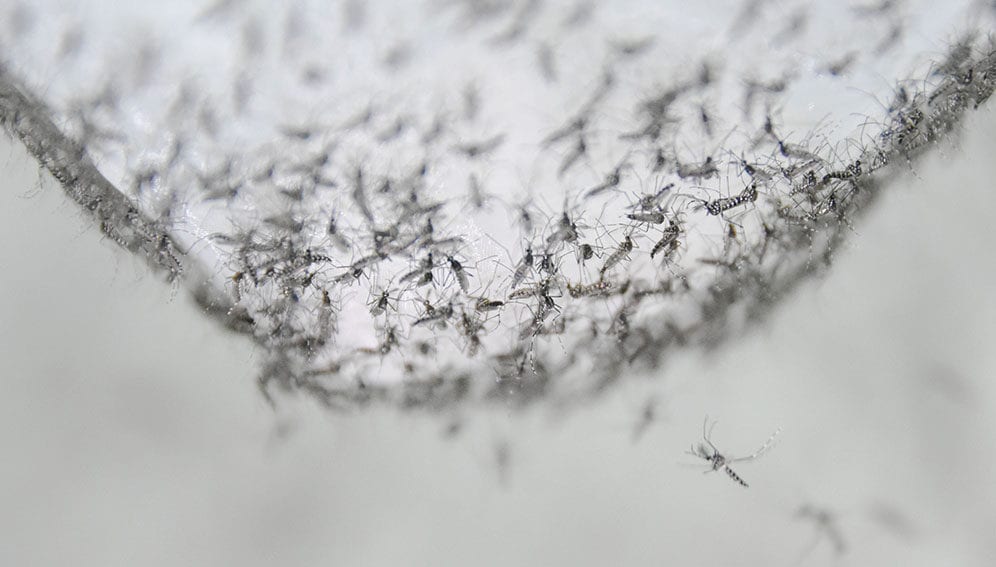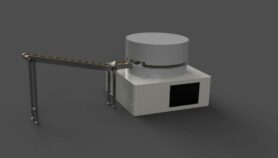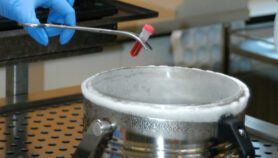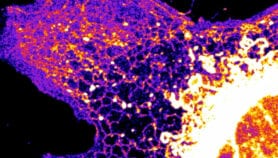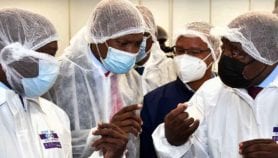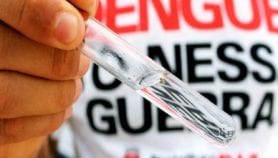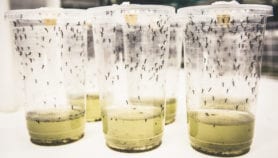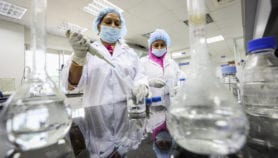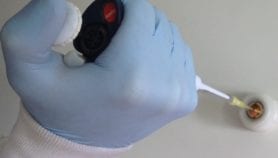Send to a friend
The details you provide on this page will not be used to send unsolicited email, and will not be sold to a 3rd party. See privacy policy.
科学家说,他们几乎消除了世界上两个测试地点的世界最具侵入性蚊子的种群,这种新型的两种方法使昆虫不可育。
During two years of trials on two islands in the city of Guangzhou, researchers reduced the number of viable eggs produced by female Asian tiger mosquitoes (Aedes albopictus) – a major vector for dengue and the Zika virus – by more than 94 per cent.
The international team from Michigan State University (MSU) and Sun Yat-sen University reported a corresponding plunge in adult females, which transmit the disease to humans by biting. Their numbers fell by 83 per cent in 2016 and 94 per cent in 2017.
“We have generated a situation no one has reached before,”
密歇根州立大学分子遗传学家吉阳
通过结合两种常规方法,实现了突破biological engineering为了最大程度的效果。
Zhiyong Xi, molecular geneticist at MSU and lead researcher of the team that published the study in the journalNature, infected millions of factory-reared male mosquitoes with沃尔巴奇, a type of bacteria found in insect guts. When these males mate with uninfected wild females, the resulting eggs are sterile. The bacterium itself also suppresses the mosquitoes’ ability to transmit a virus.
Researchers also irradiated each batch of mosquitoes to sterilise any females left in the mix, because releasing沃尔巴奇-infected females has been shown to undermine the technique.
Considered a “neglected tropical disease” by the World Health Organization (WHO), dengue is spread by the females of theAedesgenus; this includes the species白化病mosquito, or Asian tiger mosquito. WHO reports that the disease, once relatively obscure, is on the rise: an estimated 390 million cases of dengue occur worldwide per year, with 96 million reporting symptoms that include high fever, joint pain, severe vomiting and respiratory distress.
温暖的全球温度正在促进媒介蚊子的传播到新区域,或者增加的发生率disease它已经存在的地方。其中包括中国,2014年在广州的爆发持续了193天,影响了37,000多人,并夺走了五人的生命。
“We have generated a situation no one has reached before,” Xi said. “Now, we can eliminate nearly all mosquitoes in an area, which further allows us to see where they are coming in, how quickly, and determine the minimal release we can maintain to continue that elimination.”
The team also published an analysis of estimated costs for larger-scale deployment of the method, quoting US$108 per hectare per year. This includes the ongoing re-treatment of areas that had already been subjected to an initial period of intensive releases to crush high mosquito populations. He pointed to a similar programme for control of Mediterranean fruit fly in Florida and California, using sterile insects produced in Guatemala, that has been ongoing since 2000.
但是习近平确实承认,在人口稠密的地区应用该技术将是一个挑战,因为进出一个地区的人们的运动将有助于更容易返回蚊子回到以前处理的地区。
XI告诉SciDev.Net。“但是人类的活动确实给在城市环境中使用该工具带来了挑战。”
Peter Armbruster, an expert in container-breeding mosquitoes with Georgetown University in Washington DC, wrote in an analysis that despite the study’s “remarkable” results, many questions remain about the long-term sustainability of the approach.“Efforts to develop automated release technologies … should substantially improve production and release capacity,” Armbruster wrote inNature。“However, whether such technological advances can overcome the financial and logistical challenges of implementing these approaches at a scale that reduces disease transmission across a major metropolitan area or nationwide remains to be seen.”
习近平说,下一阶段的研究将涉及在广州经济沮丧地区的高层公寓中修改的蚊子的无人机释放(具有较高的登革热患病率的结构),以测试可以覆盖较大领土的自动化方法的可行性。


